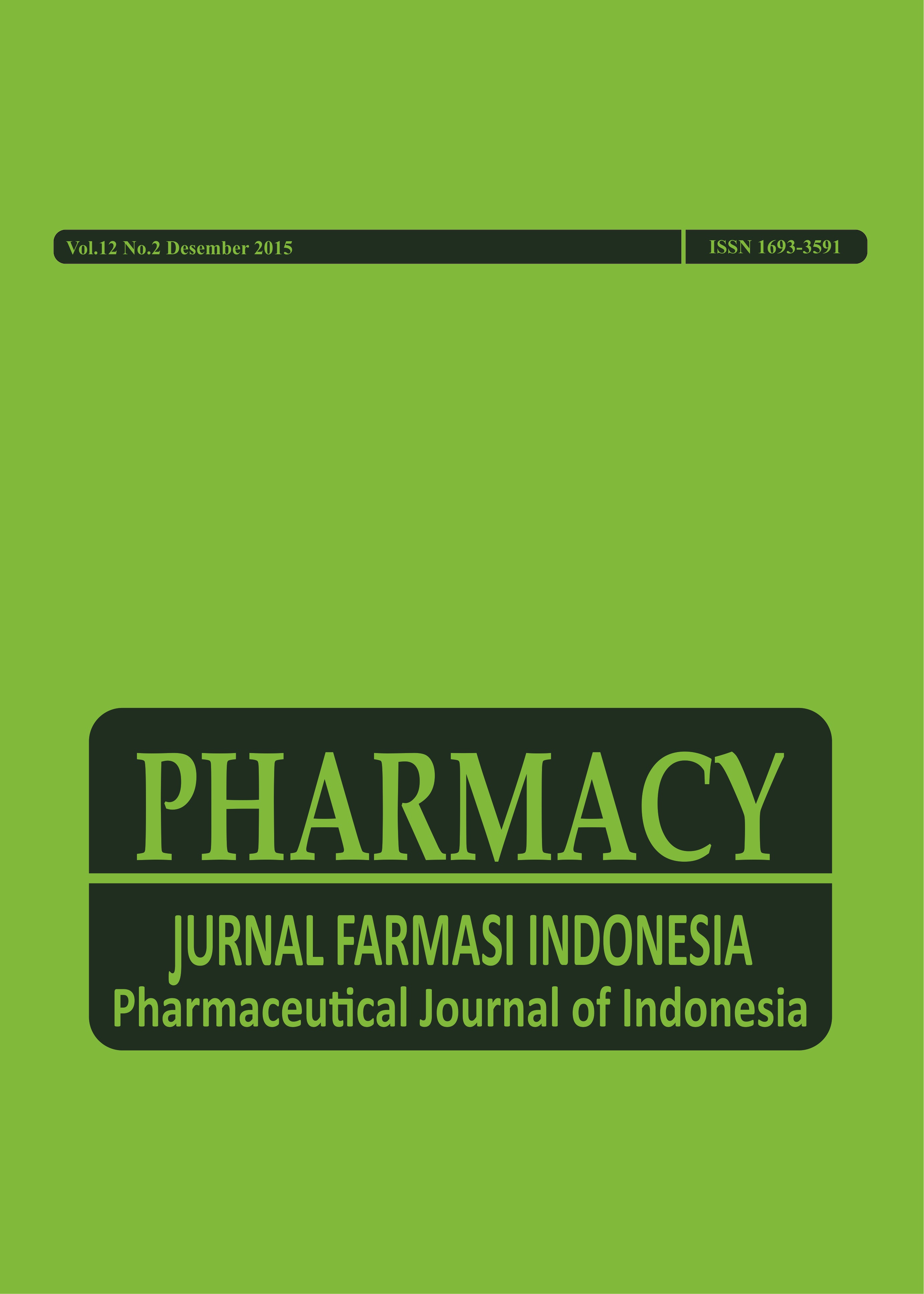Evaluasi Uji Iritasi Dan Uji Sifat Fisik Pada Sediaan Krim M/A Minyak Atsiri Bunga Cengkeh Dengan Berbagai Variasi Konsentrasi
Abstract
ABSTRAK Minyak atsiri cengkeh dengan bahan eugenol aktif telah terbukti secara ilmiah berkhasiat sebagai anti-inflamasi, sehingga diperlukan penelitian lebih lanjut terkait dengan formulasinya. Salah satu faktor penting dalam pengembangan formulasi adalah penentuan konsentrasi minyak atsiri dalam sediaan yang dimaksud. Tujuan dari penelitian ini adalah untuk mengetahui aktivitas anti-inflamasi dari krim M/A yang mengandung minyak atsiri cengkeh dengan variasi konsentrasi. Metode yang digunakan dalam penelitian ini antara lain distilasi untuk proses ekstraksi minyak atsiri cengkeh dengan Kromatografi Gas Spektroskopi Massa (KGSM) untuk identifikasi senyawa aktif eugenol dalam minyak esensial cengkeh. Krim M/A minyak atsiri cengkeh dibuat dengan metode peleburan. Sifat fisik persiapan dievaluasi dengan menguji dispersi kekuasaan, adhesi, dan pH. Evaluasi efikasi dilakukan dengan menggunakan uji iritasi pada marmut dengan menggunakan metode Remington. Kata kunci: anti-inflamasi, minyak atsiri cengkih, krim M/A, sifat fisik. ABSTRACT Clove essential oil with the active ingredient eugenol has been scientifically proven efficacious as anti-inflammatory that further research related to the formulation continues. An important factor in the development of formulations is the determination of essential oil concentration. The purpose of this study was to determine the anti-inflammatory activity of O/W cream contain clove essential oils with varying concentrations. The method used in this study includes the extraction process of clove essential oil with distillation method and identification of the active compound eugenol in clove essential oil with Gas Chromatography Mass Spectroscopy (GCMS). Preparation of a O/W cream was performed by the method of smelting. Physical properties of the preparation are evaluated by testing the dispersive power, adhesion, and pH. Evaluation of efficacy was done by using the irritating test on guinea pigs used Remington method. Key words: anti-inflammatory, clove essential oil, O/W cream, physical properties.References
Barkin, R.L. 2015. Topical nonsteroid anti-inflammatory drug: the importance of drug, delivery, and therapeutic outcome. Amer. J. Ther., 22(5):388-407. Draize, J.H. 1959. Dermal Toxicity. Austin, TX: The Association of Food and Drug Officials of the United States, Bureau of Food and Drugs. pp. 46-49. Faradiba. 2011. Formulasi salep ekstrak dietil eter daging buah pare (Momordica charantia L.) dengan berbagai variasi basis. Majalah Farmasi dan Farmakologi, 15(1):40-46. Gomes, A., Fernandes, E., Lima, J.L.F.C., Mira, L., dan Corvo, M.L. 2008. Molecular mechanisms of antiinflammatory activity mediated by flavonoids. Curr. Med. Chem., 15:1586-1605. Gunther, E. 1990. Minyak Atsiri. Jilid IVb. Jakarta: UI Press. Stevenson, D.E. dan Hurst, R.D. 2007. Polyphenolic phytochemicals-just antioxidants or much more? A review. Cell. Mol. Life Sci., 64:2900-2916. Walton, R.E. dan Torabinejad, M. 2008. Principles and practise of endodontics. Terjemahan N. Sumawinata. Jakarta: Penerbit EGC.
Downloads
Published
How to Cite
Issue
Section
License
Authors who publish with this journal agree to the following terms:
- Authors retain copyright and grant the journal right of first publication with the work simultaneously licensed under a Creative Commons Attribution 4.0 International License that allows others to share the work with an acknowledgement of the work's authorship and initial publication in this journal.
- Authors are able to enter into separate, additional contractual arrangements for the non-exclusive distribution of the journal's published version of the work (e.g., post it to an institutional repository or publish it in a book), with an acknowledgement of its initial publication in this journal.
- Authors are permitted and encouraged to post their work online (e.g., in institutional repositories or on their website) prior to and during the submission process, as it can lead to productive exchanges, as well as earlier and greater citation of published work (See The Effect of Open Access).






